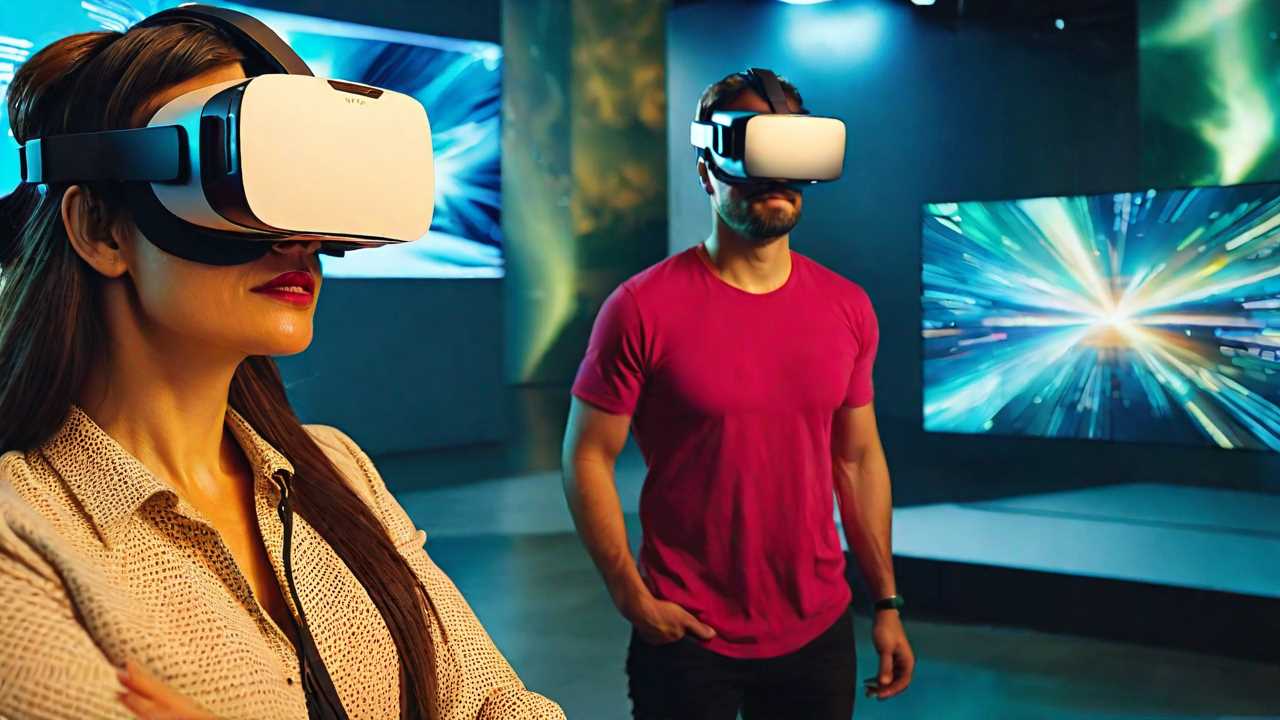Technology
How Do Virtual Reality and Augmented Reality Differ?


Curious about the nuances between virtual reality (VR) and augmented reality (AR)? Imagine this: one immerses you entirely in a fabricated world, while the other seamlessly blends digital elements into your existing surroundings. But how do these contrasting technologies truly diverge beyond the surface? Let’s investigate the intricate distinctions that shape the immersive experiences they offer and the practical implications they hold.
Definitions and Basic Concepts
Step into the virtual world and immerse yourself in the fundamental definitions and basic concepts that distinguish virtual reality from augmented reality.
In virtual reality (VR), you’re completely immersed in a computer-generated environment, shutting out the physical world entirely. This environment is typically experienced through a headset, providing you with a 360-degree view of a simulated world. It’s like being transported to a new domain where you can interact with objects and even other users.
On the other hand, augmented reality (AR) overlays digital elements onto the real world, enriching your perception of reality. AR technology superimposes computer-generated images onto your view of the physical world, allowing you to see a blend of virtual and real-world elements. It’s like having additional layers of information or objects seamlessly integrated into your surroundings.
These distinctions are pivotal in understanding how VR and AR create unique experiences for users. In VR, you’re fully immersed in a digital environment, while AR enriches your real-world surroundings with digital elements, offering different ways to interact with the virtual world.
Technology and Hardware Differences
Discover the intricate world of virtual and augmented reality by delving into the distinct technology and hardware variances that define these immersive experiences.
Virtual reality (VR) immerses you in a completely digital environment through a head-mounted display that covers your field of vision and sensors that track your movements. The hardware required for VR is designed to create a fully immersive experience by blocking out the physical world and replacing it with a virtual one.
On the other hand, augmented reality (AR) overlays digital content onto the real world, enhancing your perception of reality. AR technology often utilizes transparent glasses or smartphone screens to blend digital elements with your surroundings seamlessly. The hardware for AR focuses on enhancing your current environment rather than replacing it entirely.
Understanding the technology and hardware differences between VR and AR is essential for selecting the right immersive experience that suits your preferences and needs.
Whether you seek complete immersion in a virtual world or a blend of digital and real-life elements, the distinct hardware and technology of VR and AR cater to different desires, providing unique and engrossing experiences.
User Experience and Interaction Variances
Immerse yourself in the dynamic world of user experience and interaction variances between virtual reality (VR) and augmented reality (AR) by exploring the intricacies that shape how you engage with these immersive technologies.
- Field of View: In VR, your entire field of view is typically covered by the virtual environment, creating a fully immersive experience. AR, on the other hand, overlays digital elements onto your real-world view, offering a blend of virtual and real.
- Physical Interaction: VR often requires controllers or hand tracking for interaction within the virtual world, allowing you to manipulate objects. AR, in contrast, can utilize gestures, voice commands, or touch inputs for interaction with augmented elements in your real environment.
- Environment Awareness: VR isolates you from the physical world, enhancing immersion but limiting awareness of your surroundings. AR integrates digital content with your real-world environment, enabling you to interact with virtual elements while staying aware of the physical space.
- Social Interaction: VR experiences can be solitary or multiplayer, offering immersive social interactions. AR experiences are often designed for social engagement, allowing users to share augmented content in real-time with others.
Applications and Use Cases
Discover a multitude of practical applications and real-world use cases where virtual reality (VR) and augmented reality (AR) technologies transform industries and enhance everyday experiences.
Imagine walking through a museum and using AR to overlay historical information about artifacts, bringing the past to life before your eyes.
Picture a surgeon utilizing VR to practice complex procedures in a risk-free environment, improving surgical skills and patient outcomes.
Envision architects visualizing blueprints in 3D through AR, allowing them to see how structures fit into their surroundings seamlessly.
Step into the world of education, where VR enables students to immerse themselves in simulations, enhancing learning by making abstract concepts tangible.
With AR, retail experiences are revamped as customers try on virtual clothes before purchasing, enhancing convenience and reducing returns.
Additionally, sports enthusiasts can enjoy immersive VR experiences, virtually stepping into the shoes of their favorite athletes.
From healthcare to gaming, from design to entertainment, VR and AR technologies are reshaping industries and creating unforgettable experiences for users worldwide.
Frequently Asked Questions
Can Virtual Reality Be Used for Physical Therapy or Rehabilitation?
In physical therapy or rehabilitation, virtual reality can provide immersive experiences tailored to your needs. It offers interactive simulations for exercises, pain management, and mobility training. You’ll find yourself engaged and motivated in your healing journey.
Are There Any Health Risks Associated With Prolonged Use of Ar?
Prolonged AR use might lead to eye strain, headaches, and dizziness. Remember to take breaks, adjust lighting, and maintain proper posture. Your health matters, so listen to your body and prioritize self-care.
How Do VR and AR Impact Social Interactions and Relationships?
Immerse yourself in a world where VR enriches social connections, fostering empathy and shared experiences. AR integrates digital elements into real life, offering new ways to interact and collaborate, transforming relationships and sparking creativity.
Can VR and AR Be Integrated Into Educational Curriculum?
Step into a world where education meets innovation. Virtual Reality and Augmented Reality can transform the classroom experience, making learning engaging and immersive. Explore deeply into subjects, interact with content, and spark curiosity.
What Are the Ethical Considerations Surrounding VR and AR Technology?
In the world of VR and AR technology, exploring ethical considerations brings depth to your understanding. Navigate the complexities with care, ponder the implications, and engage in meaningful discourse to shape a responsible future.


Hello! I’m Roger Jenkins, your go-to source at ReportingTheNews.com. I’m a USC graduate who combines journalistic precision with a Trojan’s passion. Based in sunny Los Angeles, my days are filled with more than just sunshine; they’re about capturing stories that resonate.
Beyond the newsroom, I’m an avid triathlete. Swimming, cycling, and running are more than just sports to me; they embody my commitment to discipline, focus, and a healthy dose of competition.
My love for travel takes me far and wide. Guadalajara, with its vibrant culture and unforgettable tacos, has a special place in my heart. I’m always searching for the next great story or a hidden culinary treasure.
At home, Nala, my energetic pet, is my constant companion. Together, we’re known in our neighborhood for our morning runs and evening strolls.
I’m driven by a belief in the power of storytelling to unite communities. Join me as we explore impactful narratives and stay updated with the latest news. You’ll also get a peek into my sports passions and travel escapades.
Want to get in touch? Follow me on Instagram for more insights and updates.

